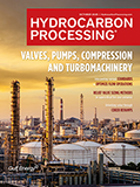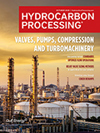Causes and countermeasures for a compressor lube oil system failure due to delayed oil pressure recovery by an auxiliary lube oil pump
This article shares insights from a lube oil system issue and recommends key points to consider when operating oil systems.
IP: 10.2.76.72
This is a preview of our premium content. Thank you for your interest—please
log in or
subscribe to read the full article.
The Authors
H. Jeong - SK Energy, Ulsan, South Korea
Hyoseok Jeong has 9 yr of experience as a rotating machinery engineer in petrochemical plants, especially in polymer plants. He specializes in maintenance, reliability and improvement. Jeong earned a BS degree in mechanical engineering and is certified as a Professional Engineer in Welding by the South Korean government.
W. Eom - SK Energy, Ulsan, South Korea
Wooseok Eom has 6 yr of experience as a rotating machinery engineer in refineries and petrochemical plants. He specializes in gas turbine generators, maintenance, reliability improvement and technical support. Eom earned a BS degree in mechanical engineering in South Korea.
Related Articles
From the Archive








Comments